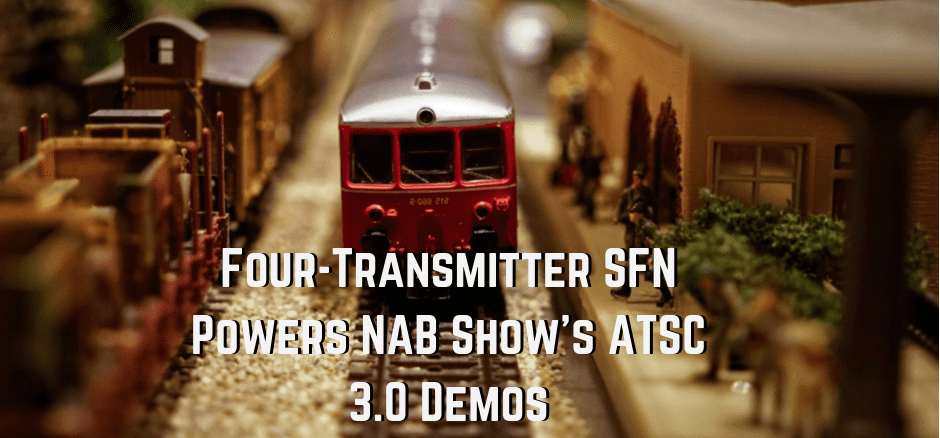
To provide the RF signals for the “Riding the Road to ACTS 3.0” model train displays, the NAB arranged for a four-transmitter single frequency network (SFN) to be designed and installed at the LVCC to demonstrate both the relative ease with which an SFN could be rolled out using ATSC 3.0 technology and the rock-steady video that the standard delivers to receiving devices that are on the move.
Kelly Williams, the NAB’s senior director of engineering and technology policy, described the project as very rewarding, and stated that even with the miniscule power being delivered by the network’s “transmitters” (they’re actually ATSC 3.0 modulators, or exciters with no power amplifiers added), he was very pleased with the results at all of the receive sites in the cavernous exhibit halls.
“[We found that] the signal had good coverage,” said Williams. “The modulation was set for 16-QAM, as we wanted it to be pretty rugged and robust, and the payload was set at about 10.5 mbps pushing video at about eight, and we’re using Surface Pro tablets with 3.0 dongles as receivers. The results were pretty darn good.”
One of these model railroad demos was set up in the Central Hall Concourse, and two others in the North Hall.